 My preferred form of exercise is weight training. It’s something I’ve been doing since I was fifteen and I credit it with setting the foundation for a reasonable degree of muscularity and strength which I’ve managed to retain to this day at the advanced age of 58. I began lifting weights in the basement of my parents’ home and have continued this practice across several gyms during the intervening years. I’ve had lapses where I’ve taken an extended hiatus, but I’ve always gone back to lifting. I suppose it gets under your skin and in your blood somehow.
My preferred form of exercise is weight training. It’s something I’ve been doing since I was fifteen and I credit it with setting the foundation for a reasonable degree of muscularity and strength which I’ve managed to retain to this day at the advanced age of 58. I began lifting weights in the basement of my parents’ home and have continued this practice across several gyms during the intervening years. I’ve had lapses where I’ve taken an extended hiatus, but I’ve always gone back to lifting. I suppose it gets under your skin and in your blood somehow.
Recently, I’ve begun taking some of my workouts at home. There’s no basement in my current home and there’s pretty much no extra space available. I also didn’t feel like investing in a bunch of new weight lifting equipment, but since there wasn’t any place to put it, this was never a viable option. The only alternative was to conduct some form of resistance training in a very confined space. I wonder who else manages to do this.
These sorts of workouts typically combine resistance training along with an aerobic element. They are essentially old school circuit training routines (remember the “Universal” gym?). Nowadays, these kind of routines are referred to as intervals or HIIT (high intensity interval training). There is a core set of exercises that are performed in quick succession with minimal rest between exercises. This is what gets the heart pumping. The exercises are often a mix of cardio style exercises such as burpees, knee ups, mountain climbers, etc. along with resistance movements like pushups, chins, and floor dips. A longer rest period is taken between intervals or circuits prior to commencing the next round. Progression is achieved by increasing the number of intervals, shortening the rest period between exercises and intervals, and increasing the number of reps for the exercises. This kind of routine can really get you sweating – as I can attest – and they don’t need to turn into extended marathons to get decent results. A productive workout can be had for under thirty minutes with some consisting of only twelve minutes or all-out effort [ref. 12min workouts]
My Thirty Minute Interval Workout
I’m fortunate to have a few small pieces of exercise accessories and equipment as an old pair of adjustable dumbbells, which are fixed with the full complement of plates to attain a pair of 20lb bells. In addition, I have a long foam yoga mat which I used for pre-workout stretching and bench pressing, an over-door chinning bar, a jump rope, and some improvised items such as a tennis ball “foam roller,” and a wooden chair for dips and seated dumbbell movements. I’ve listed the primary muscles worked along with any supporting muscles groups for each exercise.
Pre-workout Stretching Routine
At my advanced age, it’s mandatory that I get in a thorough stretching session prior to jumping into the main interval workout. Long gone are the days when I could start my workout with near max weights without fear of pulling something. I allow a good 10 minutes to stretch out my entire body – especially my torso and lower back which always seem to be stiff and knotted these days. I use an improvised “foam roller” which is simply a tube sock stuffed full of old tennis balls.
- Roll entire body from shoulders down to calves paying particular attention of knotted muscles (trigger points)

- Rib grabs to loosen shoulders while resting knee on “roller”
- Alternating arm back stroke to loose shoulders
- Bridges to loosen hamstrings and lower back
First Interval
(about 20 seconds effort + 10 seconds rest)
- Jump rope (cardio)

- Air squats (quads)
- Paint can deadlifts (simulates kettle bell – hamstrings and glutes)

- Dumbbell bench press on yoga mat (just need to get arms to 90 degrees at bottom – chest)
- Chin ups on bar (lats and delts)

- Standing dumbbell curls (biceps)
- Chair dips (triceps and shoulder)
- Plank (use timer to go as long as possible – core)

- Cool down from plank position doing yoga poses
- Rest 1 minute
Second Interval
- Jump rope (cardio)
- Lunges (10 per side – quads)
- One legged pistols (hamstrings and glutes)
- Pushups (chest, shoulders, triceps)
- Dumbbell bent over rows (lats, biceps, shoulders)
- Pullups on bar (biceps, lats, shoulders)
- Seated triceps dumbbell press (triceps)
- Plank (core)

All Done!
I apologize for not having pics of the actual exercises. At some point, I’ll enlist the help of a photographer friend to take those. In the mean time here are some links to give you a better idea of some of the exercises and workouts.
- Krista at 12minuteathlete.com has some really creative routines that don’t require weights or a gym membership. She’s also quite an inspiration.
- NerdFitness.com has some good improvised resistance training ideas.
- Though I’m not much of a fan of CrossFit, the CF warmup video on this page has some very good body weight movements.
Photo Credits (morguefile.com):
- Pumpkin Cage: Jason Gillman
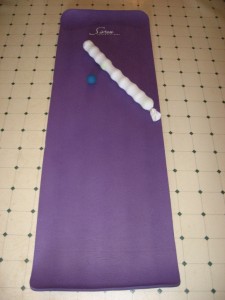
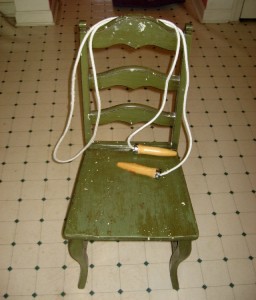



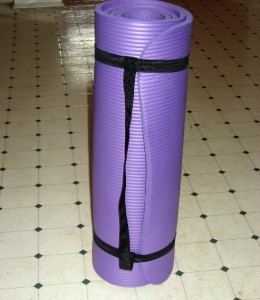
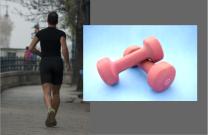 Diet and exercise have long been accepted as the foolproof way to lose weight. You might say they go together like love and marriage. For a lucky few, exercise alone can make up for a host of dietary sins. For the rest of us, both the diet and exercise bases need full coverage. The question then comes down to which type of exercise works best at melting off the pounds. And do you need to practically kill yourself like a contestant on The Biggest Loser?
Diet and exercise have long been accepted as the foolproof way to lose weight. You might say they go together like love and marriage. For a lucky few, exercise alone can make up for a host of dietary sins. For the rest of us, both the diet and exercise bases need full coverage. The question then comes down to which type of exercise works best at melting off the pounds. And do you need to practically kill yourself like a contestant on The Biggest Loser? Having a regular workout routine is vital not only to help lose excess pounds and to keep them off, but also to keep your body in good working order. The old adage “use it or lose it” really applies to the human body. Stiff tendons and joints and weak muscles are a direct result of not putting them through their proper paces on a regular basis. The same goes for your lungs, heart muscles, and circulatory system. Finding yourself gasping for air after dashing for a bus or having to take the stairs when an elevator is out of order is just another warning sign that you’re not providing your body with sufficient physical stimulation to keep it working smoothly.
Having a regular workout routine is vital not only to help lose excess pounds and to keep them off, but also to keep your body in good working order. The old adage “use it or lose it” really applies to the human body. Stiff tendons and joints and weak muscles are a direct result of not putting them through their proper paces on a regular basis. The same goes for your lungs, heart muscles, and circulatory system. Finding yourself gasping for air after dashing for a bus or having to take the stairs when an elevator is out of order is just another warning sign that you’re not providing your body with sufficient physical stimulation to keep it working smoothly.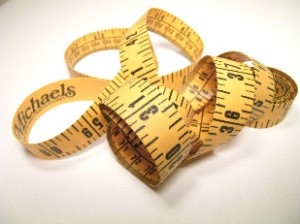 I’ll start out by saying that I’m not a big fan of so-called “reality” TV shows, though I will confess that I used to enjoy watching the early episodes of The Osbournes. It probably was because I was a big fan of Black Sabbath when I was younger and I also found some humor in the show. It was funny to see “The Prince of Darkness” stumble and mumble his way through suburban living never quite seeming to believe this is where he ended up. As for the rest of the genre, no thanks, I’ll take a pass. It does seem that I’m in a distinct minority on this score however.
I’ll start out by saying that I’m not a big fan of so-called “reality” TV shows, though I will confess that I used to enjoy watching the early episodes of The Osbournes. It probably was because I was a big fan of Black Sabbath when I was younger and I also found some humor in the show. It was funny to see “The Prince of Darkness” stumble and mumble his way through suburban living never quite seeming to believe this is where he ended up. As for the rest of the genre, no thanks, I’ll take a pass. It does seem that I’m in a distinct minority on this score however.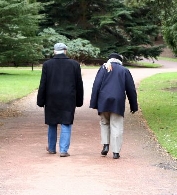 Walking is touted so often as an easy and effective way for losing weight and maintaining good health that many of us have come to tune this advice out because we consider it outdated. Instead, we look for what we consider more advanced and more rigorous forms of exercise with the belief that only something high-tech and insanely punishing can possibly work for taking off excess pounds and inches. But before you break out your credit card for the latest and greatest weight loss contraption, do yourself a big favor, and consider the benefits of regular strolls around the neighborhood.
Walking is touted so often as an easy and effective way for losing weight and maintaining good health that many of us have come to tune this advice out because we consider it outdated. Instead, we look for what we consider more advanced and more rigorous forms of exercise with the belief that only something high-tech and insanely punishing can possibly work for taking off excess pounds and inches. But before you break out your credit card for the latest and greatest weight loss contraption, do yourself a big favor, and consider the benefits of regular strolls around the neighborhood.